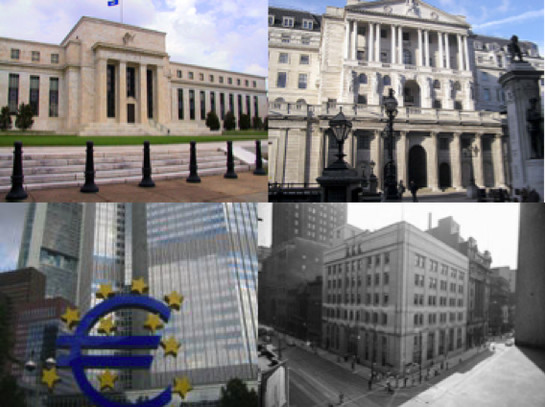Forex traders use each country’s currency as their trading asset as if Dollars and Euros were Apple shares. As such, it’s only logical that central banks play a central (pun intended) role when values and prices start fluctuating.
However, it can be difficult to understand the complete influence of these entities over the Forex market.
Since knowing the importance of central banks is paramount to execute good fundamental analyses, you’re about to learn just that in this post.
Responsibilities Of A Central Bank
A central bank is tasked with monitoring and regulating a nation’s economic growth, for they influence virtually everything regarding pricing, inflation, interest rates, and monetary policy.
Central banks have the responsibility of ensuring and maintaining the value of a nation’s currency. They usually do so by employing measures that affect prices and overall money supply with the objective of keeping a modest level of inflation.
Additionally, central banks stimulate the economy by employing monetary policies in case the state’s fiscal policies fail to do the same.
Another way central banks can change the financial situation of a country is by regulating other financial institutions. It can be done by testing and licensing other institutions as well as testing the systems used by said institutions.
The end result is that central banks are tasked with keeping the nation’s financial stability, and this - in turn - puts them directly in charge of a currency’s value.
Currency Interventions
Currency interventions are a method used by central banks to ensure that a coin’s value is appropriate for its competitivity in the global market and its economic growth. They are done through purchasing and selling currencies (or bonds priced in them).
a. Sterilised
Sterilised interventions don’t change the nation’s monetary base.
Sterilised interventions are carried through the buying/selling bonds denominated in foreign currencies while doing the same with bonds in the domestic currency to provide balance.
b. Unsterilised
On the other hand, unsterilised interventions do affect the monetary base or “balance” in a nation’s money supply.
Whereas sterilised interventions also trade bonds in domestic currency, unsterilised transactions only deal with foreign currency bonds.
Note: Central banks have a third way to intervene in the foreign exchange, and it’s done through actively participating in it. If the value wants to be changed in the short-term, central banks can purchase or sell foreign currency with the domestic one or vice-versa.
Effectiveness Of Currency Interventions
While currency interventions are considered a modern tactic, the US sterilised European gold imports during the Great Depression by selling USD with the goal of maintaining the gold standard.
Nevertheless, currency interventions as a way to affect the Forex market are a consequence of globalisation—understandable, seeing how the Forex market is a direct result of the same process.
However, their effectiveness is highly debated today.
Economists tend to agree that non-sterilised interventions can change the Forex market in the long-term, for they affect the monetary base directly. Nevertheless, sterilised interventions are thought to be irrelevant.
While the Bank of Japan is known for using the strategy, traders always respond by pushing the Yen upwards, even if that’s not the objective.





